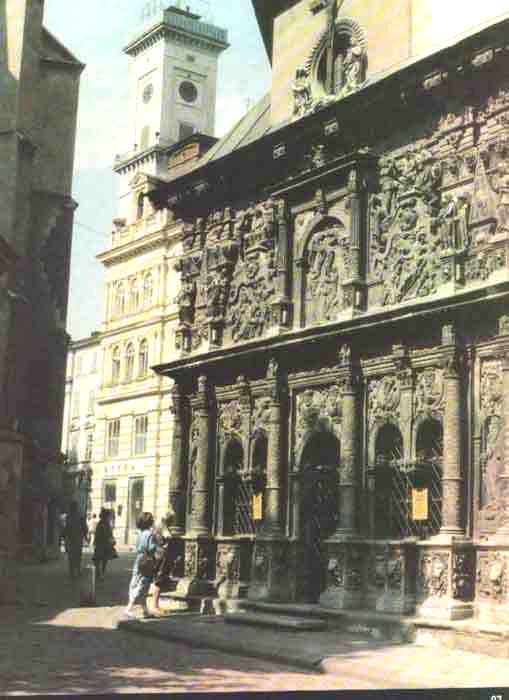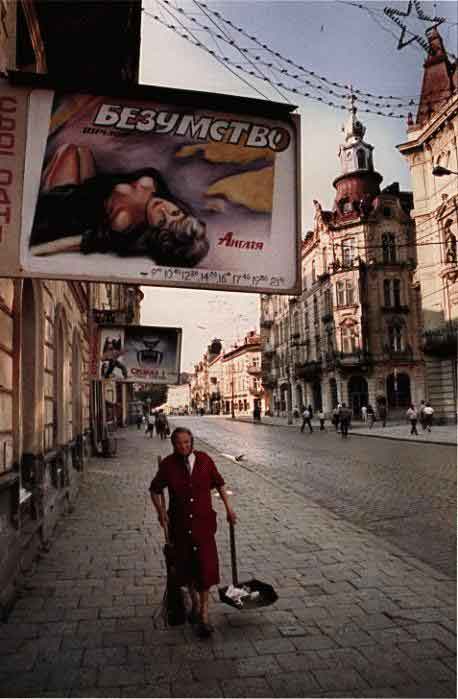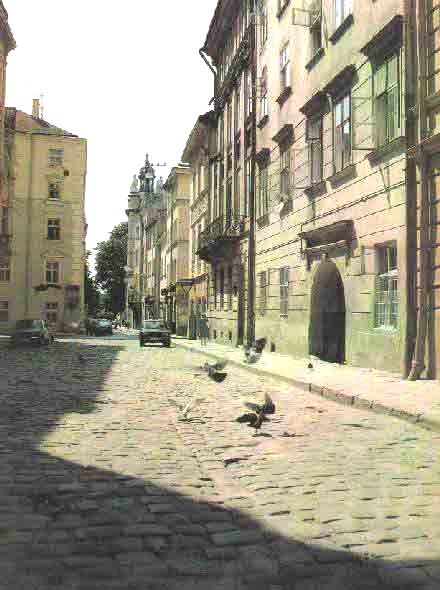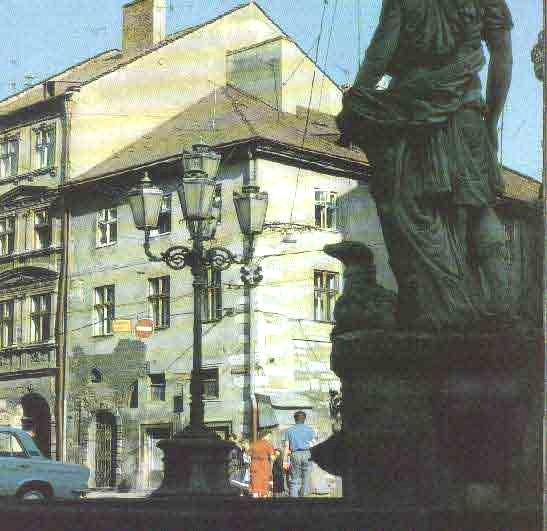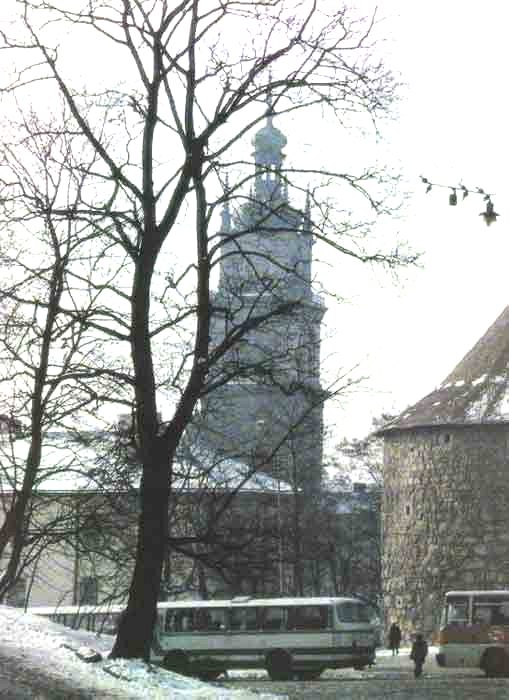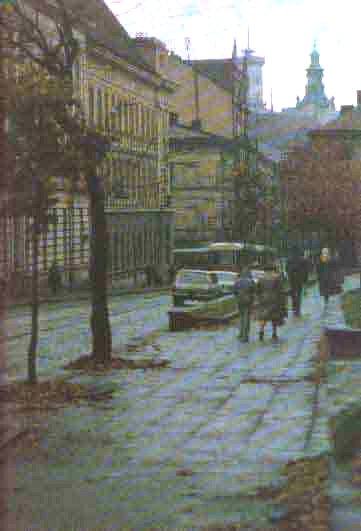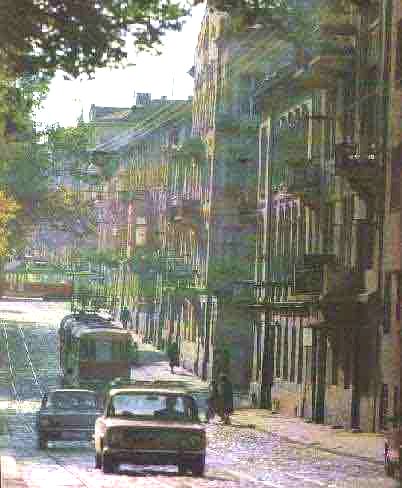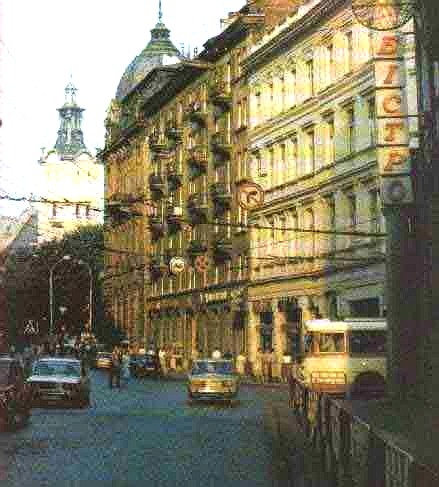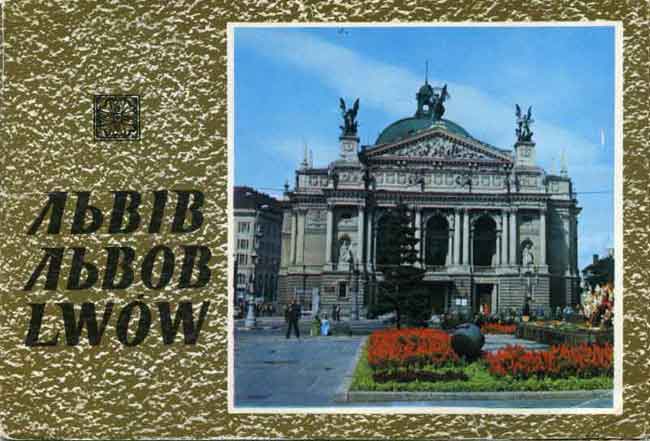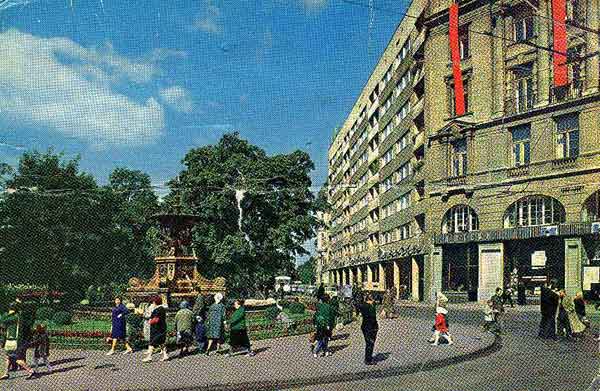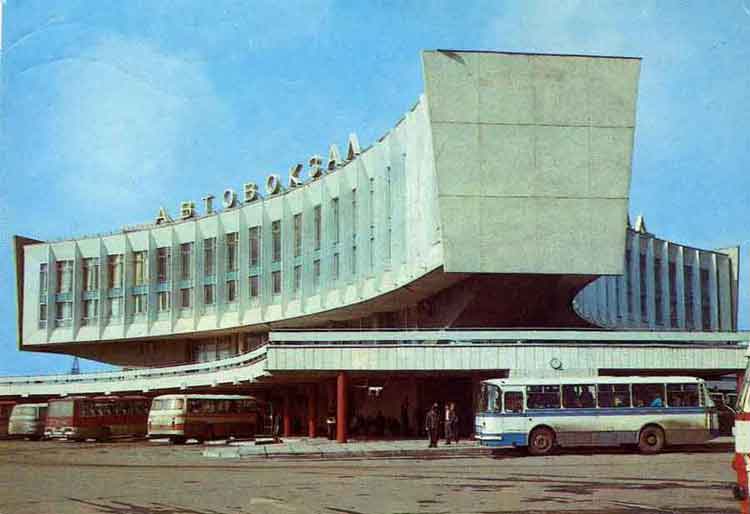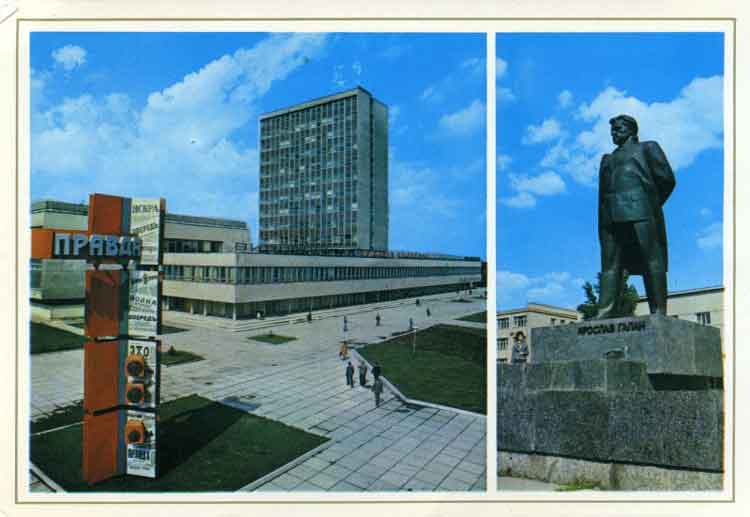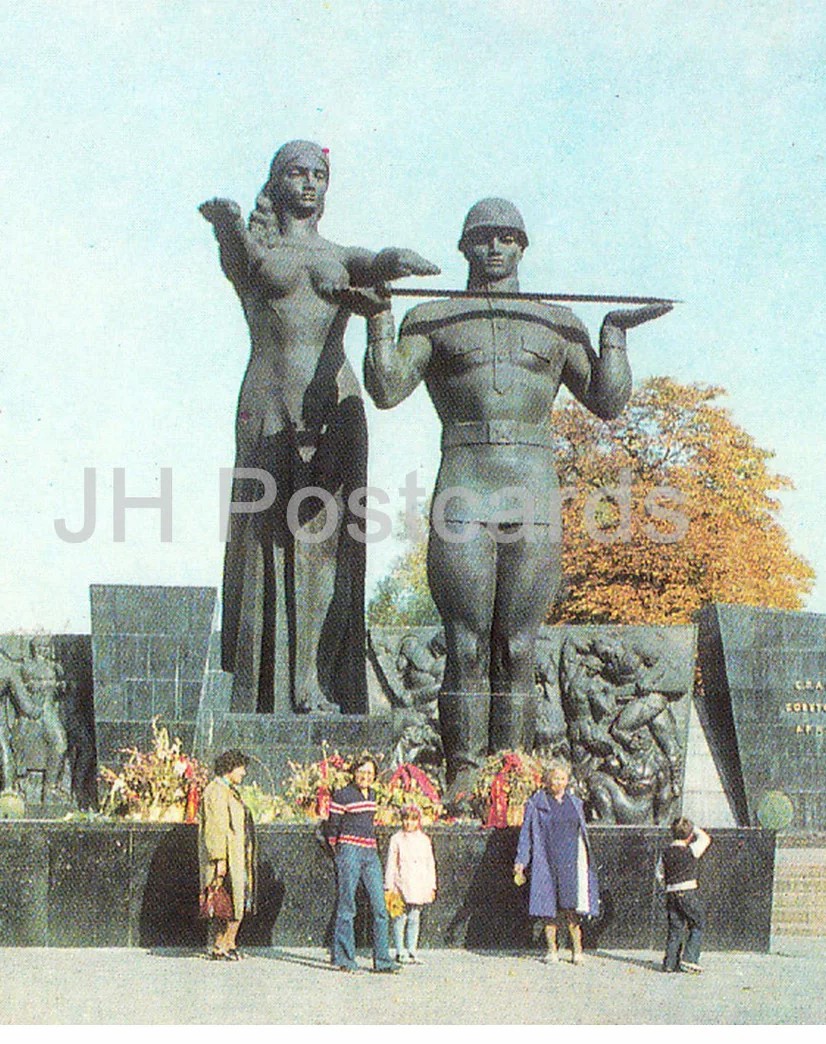Lvov Photos
Almost all the pictures here are scans I made myself in the 1990s from a Soviet-era book printed back in the 1980s. If you spot any errors in my descriptions, or know any fun facts about these places, I’d be happy to hear from you—just send me an email.
I know Soviet Lvov can be a complicated topic, but for me, these images are full of memories from the city where I grew up. They remind me of ordinary days, familiar streets, and simple joys of that time. I hope you enjoy this little journey through Lviv’s past—maybe it’ll bring back some memories for you too, or just let you see the city from a different angle.
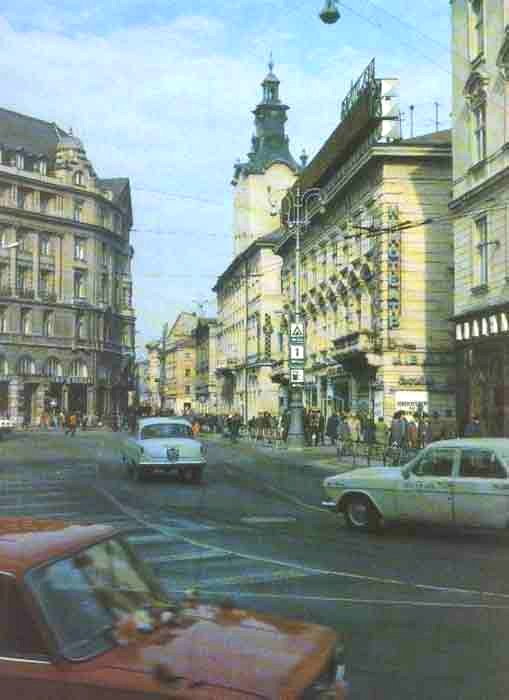
- Svobody Avenue (Prospekt Svobody) was once Hetmańska and Ringplatz (under Polish and Austrian rule), renamed Lenin Avenue in 1959, and given its present name in 1991.
- Mickiewicz Square (Ploshcha Mitskevycha) was previously called Ferdinandplatz and Adama Mickiewicza Platz.
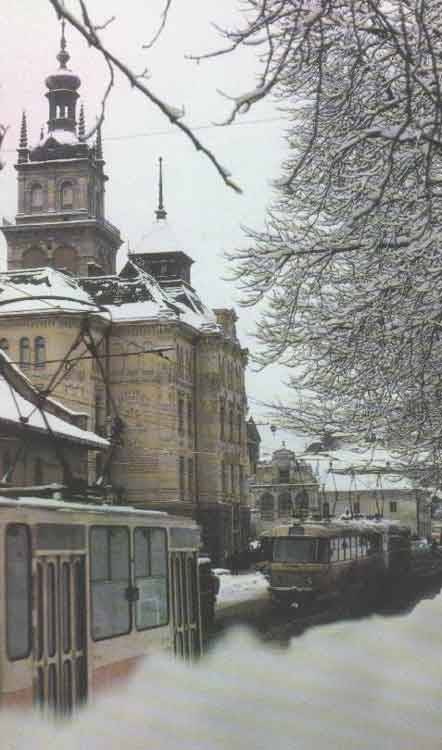
This wintry scene shows classic Lviv trams running through deep snow past ornate historic buildings in the city center—likely on Zamarstynivska Street (Замарстинівська), an important north–south route in Lviv. The street was known as Zamarstynowska (Polish) and Zamarstynowska Strasse (German) before WWII, and kept its historical name in Soviet and modern times, though spelling shifted to Ukrainian after 1991.
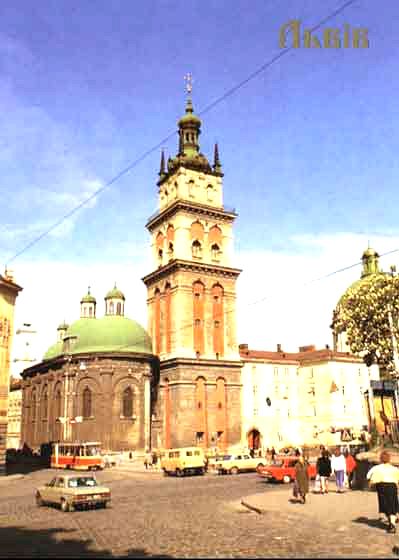
- Ukrainian: вулиця Руська (Vulytsia Ruska, “Ruthenian Street”)
- Polish: ulica Ruska (“Ruthenian Street”)
- Russian: Русская улица (Russkaya ulitsa, “Russian Street”)
- German: Ruthenische Gasse (“Ruthenian Alley”)
This area has been called Ruska since medieval times and remains a center of Lviv’s Ruthenian/Ukrainian heritage. The Renaissance bell tower, completed in 1578, and the green-domed church are some of the city’s most important historical and religious landmarks.
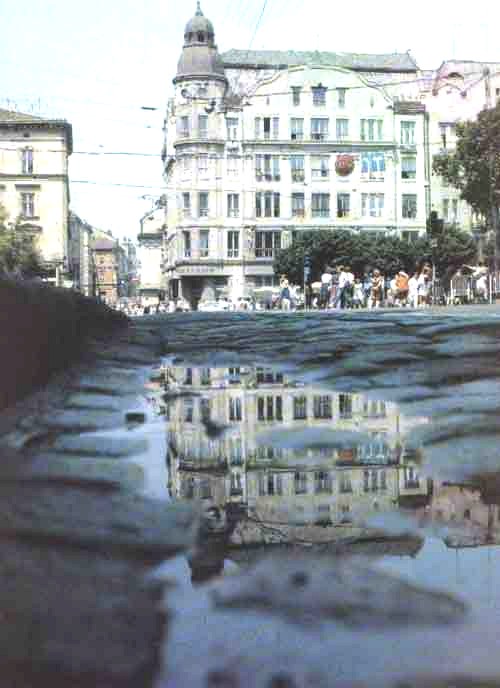
- Svobody Avenue: проспект Свободи (Ukrainian, since 1991), Галицкая улица (Galitskaya, Russian, Soviet era), ul. Legionów (Polish), Galizische Strasse (German/Austrian)
- Valova Street: вулиця Валова (Ukrainian), Валовая улица (Valovaya, Russian), ul. Wałowa (Polish), Wallstrasse (German)
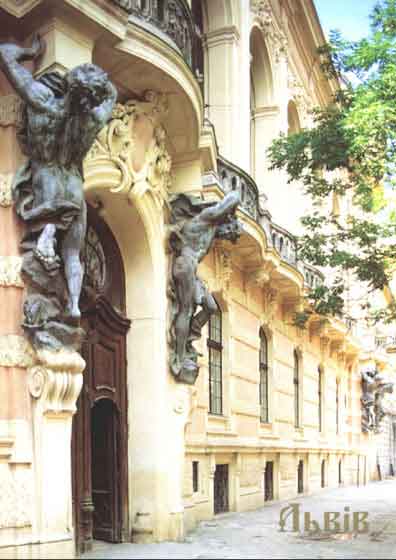
Built in the 1880s for the Polish noble Potocki family, this palace is now home to the Lviv Art Palace.
Street names: Kopernyka Street (Ukrainian: вулиця Коперника), formerly ul. Potockiego (Polish), Kopernikusgasse (German/Austrian).
